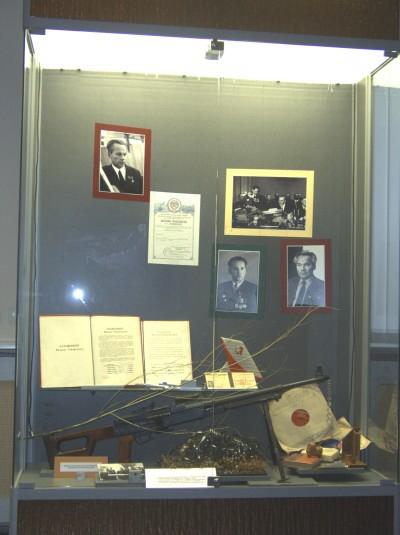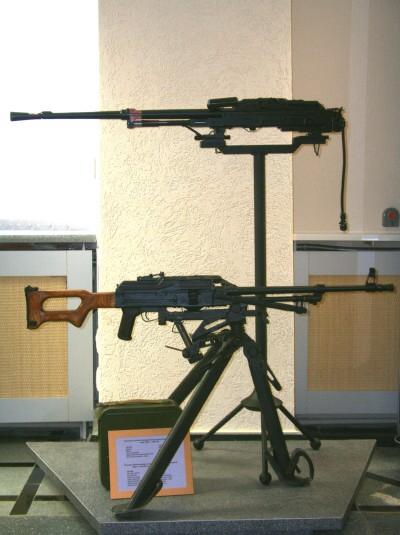Pic.6-3
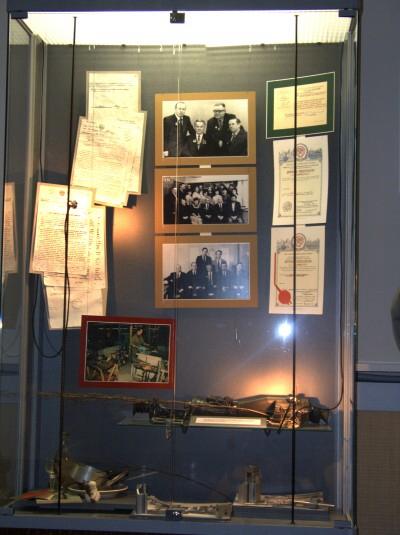
|
Pic.6-4
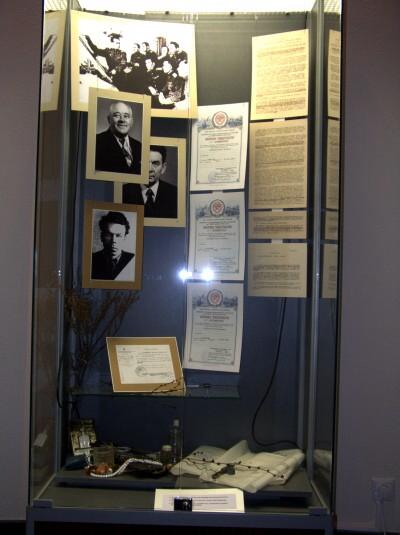
|
|
This showcase features photos of Mikhail Kalashnikov with colleagues, Kalashnikov's "author's certificates," the closest thing the Soviet Union had to patents, and night sights.
|
|
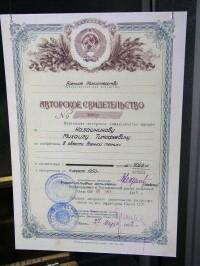
Pic.6-5 Author's certificate issued to Mikhail Kalashnikov for "invention made in a field of military equipment"
|
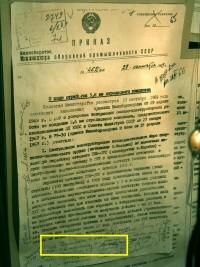
Pic.6-6 Top secret: The order of USSR Ministry for Defense Industry on further development of 5.56 unified small arms system, dated Sept. 29 1969. Signature of Kalashnikov visible down the page (marked).
|
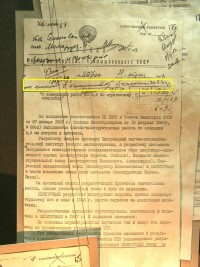
Pic.6-7 Top secret: The order of USSR Ministry for Defense Industry on fulfillment of of 5.56 unified small arms system development, dated April 29 1969. Signature of Kalashnikov clearly visible up the page (marked).
|
|
|

|
Pic.6-8
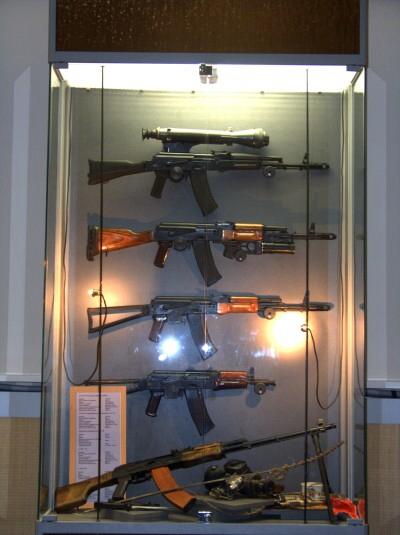
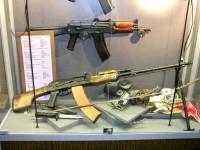
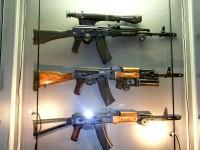
Pic.6-9 close-up: RPK, AKS-74U, bayonet, night sight
Pic.6-10 close-up: AK74 with night sight mounted, AK-74 with GP25, AKS-74
In early 1970s Kovrov Machine Factory (Kovrovsky Mekhanichesky Zavod) and Izhevsk Machine Factory (Izhevsky Mashinostroitelny Zavod, Izhmash) were engaged in development of unified small arms system for the new, much smaller ammunition (5.45 mm Soviet vs. 7.62 mm Soviet, or 0.21 vs 0.30 inch). Izhevsk factory won the contest, in particular, the winner was AK-74 designed by Mikhail Kalashnikov, and AK-74 assault rifle was adopted in 1974.
Please take a look: the upper model is AK74 with night sight mounted. The next one - AK-74 with the 40-mm GP25 underbarrel grenade launcher, you can see a rubber shock-absorber mounted on the butt-stock to decrease recoil caused by grenade launcher.
Next is AKS-74 - it features folding stock, and the last one is AKS-74U - it sports folding stock, short barrel, altered sight and gas mechanism, odd-looking flash suppressor device on the muzzle. Very popular with Spetznaz (Russian Special Forces) troops as well as Russian law enforcement in Russia's large cities. Based on AK-74 design, there was light machine gun RPK (with 45 rounds magazine) developed and adopted by the Red Army.
|
|

|
|
Pic.6-11
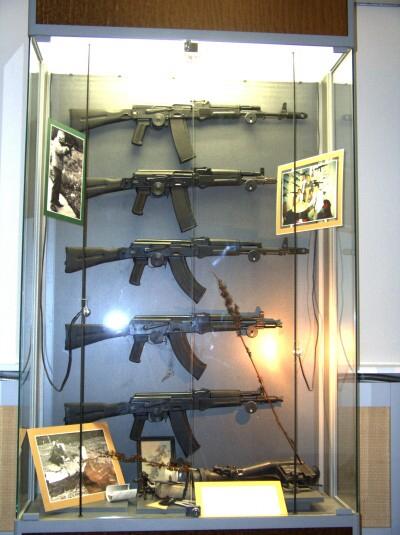
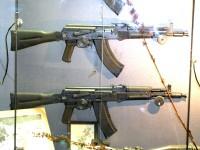

Pic.6-12 AK-104 and AK-105
Pic.6-13 AK-101, AK-102 and AK-103
By 1990s, being in existence for over 50 years, AK Assault Rifle became a world's small arms classics, and in 90s, as a successor to AK-74M, a new generation of Kalashnikov Assault Rifles designated AK-100 series was introduced.
There are 5 subsequent modifications: AK-101, AK-102, AK-103, AK-104 and AK-105. They differ in caliber and dimensions, in particular, AK-101 and AK-102 were made for NATO ammunition.
|
|

|
|
Pic.6-14
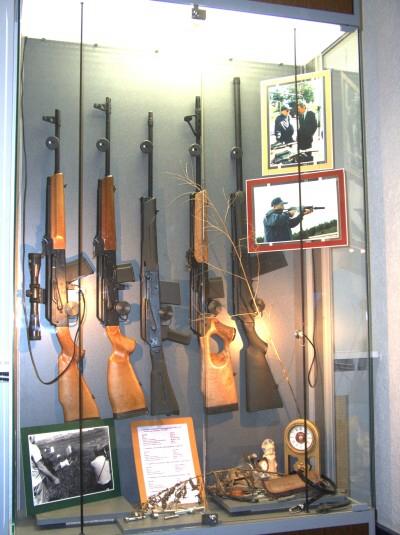
 Also, taking the AK as prototype, there was designed a line of hunting rifles:
Also, taking the AK as prototype, there was designed a line of hunting rifles:
- Saiga self-loading hunting carbine (1974) (developed from the AKM Kalashnikov assault rifle in 1974) and
- Vepr self-loading hunting carbine (developed from the
Pic.6-15 Artifacts of the epoch
RPK-74 light machine gun.
It differs from the RPK-74 in caliber, cartridge, mode of fire, magazine capacity, design and dimensions).
Featured in this showcase, first three guns and the latter black finish gun are produced by Izhmash, while Vepr carbine is made by Vyatsko-Polyansk Factory.
|
|
|
